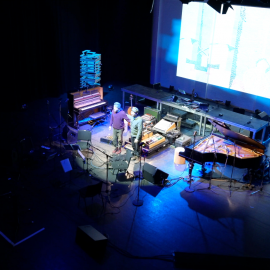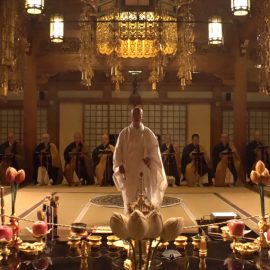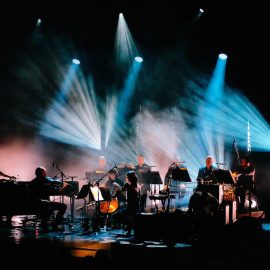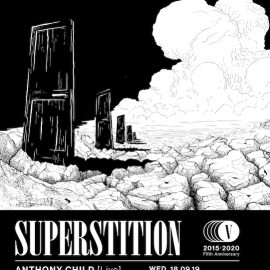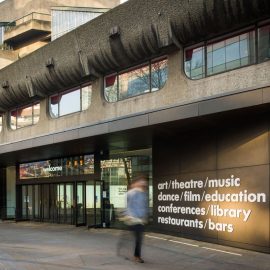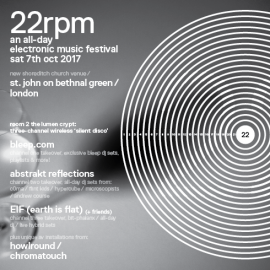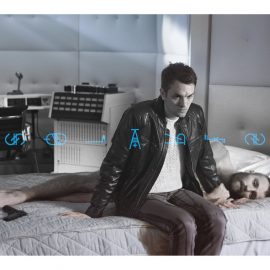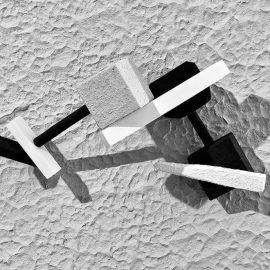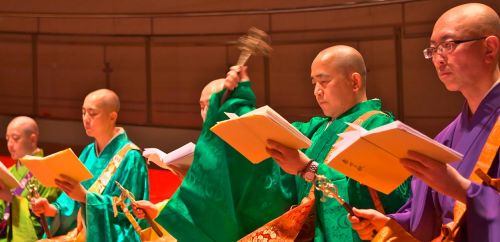
I often meditate on sound. Not just on the origination thereof, but on the entire process of its perception, mental formations and finally consciousness. Somewhere something makes a “sound” – a wave-like vibration shifting pressure through air. The waves themselves have two main properties: frequency and amplitude. Yet somehow, through the amazing (yet, arguably limited) process of hearing, the human ears can translate that signal and identify its spacial location. What happens after is still a mystery to me. The brain can identify the pattern and associate it with some mental construct as the origin of that sound. This way, a sound of a crumbling piece of paper will always be a crumbling piece of paper (as opposed to a sound of a creaking wood floorboards). But what if that sound was synthesized and perhaps even slightly modified to shed some of its recognizable properties? What happens in the brain after perception and prior to consciousness?
I was meditating on sound during a Shōmyō, a style of Japanese Buddhist ritual chant (performed mainly by Shingon and Tendai sects), during a unique performance by Shōmyō no Kai – Voices of a Thousand Years of Sonbou no Toki (Life in an Autumn). It is during my concentrated listening of these pure, resonant and very human voices that I tried to work out the discernment of the perceived. During this 90-minute a cappella, performed continuously without a break, the twenty priests exhaled long single notes in unison, employing a ‘Yo scale’ (a pentatonic scale of ascending intervals) that often ended in a pitched-up sigh. I tried to figure out the music notation they were holding, but from an accidental glimpse I could only see the Kanji drawn across the paper in some step-ladder intervals, which I assume have specified their pitch. The voices became more intense and almost quadrophonic, as the monks moved up and down the centre isle of the Episcopal parish.
Here I am in the winter of my ears.
Having lived with you since spring
And yet, where did autumn go?
Based on this oldest vocal form of Japanese Buddhism, Sonbou no Toki was composed by Ushio Torikai, reflecting on the events of 9/11. Focusing on the instabilities of the world after this terrible event, the composer questions the struggles and hatred born out of ethnic and religious differences, as well as the ancient thoughts about the nature of life, ethnicity and human civilization. The music explores the original and most primitive instrument of all time – human voice. “More than 3000 years ago,” muses Torikai in his composer’s notes, “people came up with the idea of creating primitive, yet most imaginative stringed instruments with an immense desire to hear sounds that they had never heard before. […] Music constitutes the ethnic identity of people all over the world. It is an expression of the beauty of the wonderfully varied lives that people live.”
This event took place on March 6th, 2014, at St. Bartholomew’s Church in New York, sponsored by Japan Society and The Mid-Manhattan Performing Arts Foundation. Sonbou no Toki was a very first performance outside of Japan, in a city which the composer and the chanting monks have long hoped to visit after the tragedies of 9/11. I certainly consider myself lucky to be able to witness such a once-in-a-lifetime event, one which will leave me to ponder, reflect, and of course meditate on more properties of sound, human perception, consciousness and the integration thereof.
